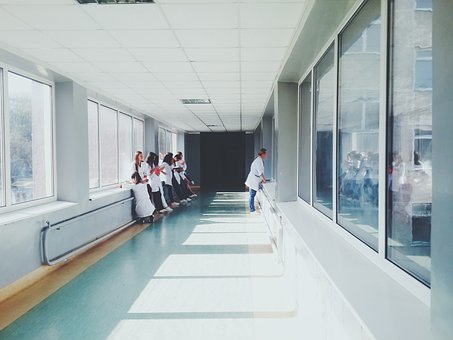Tag: healthcare automation
 By Grace Nam, Strategic Solutions Manager, Laserfiche.
By Grace Nam, Strategic Solutions Manager, Laserfiche.
As the healthcare industry continues to grapple with the dual challenges of rising costs and evolving patient expectations, the urgency to modernize and automate has never been greater.
A recent Deloitte report reveals that 75% of life sciences executives have a positive to cautiously positive outlook for 2025, signaling optimism despite ongoing challenges.
This optimism is rooted in the sector’s ability to innovate, leveraging technology to drive operational efficiency and improve patient outcomes.
With aging populations and increased demand for digital healthcare solutions, organizations must adapt quickly to remain competitive in a rapidly changing landscape. From integrating automated data processes to centralizing patient records, modernization is no longer a luxury—it is a necessity. These technological advancements not only streamline administrative tasks but also set the foundation for a more patient-centric approach to care. As we move into 2025, the industry stands at a critical crossroads, where the adoption of cutting-edge solutions will determine its trajectory for years to come.
Modernizing Legacy Systems
The modernization of legacy systems will be a cornerstone of healthcare innovation in 2025. Many institutions are shifting toward centralized and structured document management through integrated solutions. This approach streamlines operations, reduces manual processes, and lays the foundation for scalable automation. Tools that auto-extract and auto-populate healthcare data are increasingly becoming the norm, driving operational efficiency and improving data accessibility for healthcare staff.
These advancements not only reduce administrative burdens but also enhance the patient experience. Automation plays a critical role in managing patient information and streamlining tasks, such as appointment scheduling, billing, and record management. Younger generations, in particular, are pushing for rapid, digital-first engagement, favoring seamless interactions over traditional methods. By investing in these technologies, healthcare providers can better meet these expectations, creating a more responsive and patient-centric system.
Continue Reading
By Rick Halton, vice president, marketing and product, Lumeon.
 Since it was first recorded late last year in China, the spread of COVID-19 has accelerated around the world, rapidly creating a global pandemic. The number of new cases is increasing exponentially, putting the western hemisphere in particular on a frightening trajectory, as health systems struggle to battle the virus.
Since it was first recorded late last year in China, the spread of COVID-19 has accelerated around the world, rapidly creating a global pandemic. The number of new cases is increasing exponentially, putting the western hemisphere in particular on a frightening trajectory, as health systems struggle to battle the virus.
Though billions of individuals around the world are undergoing mandated lockdowns and committing to physical distancing, hospitals continue to be engulfed in an onslaught of COVID-19 patients. One of the most significant impacts of this virus is how rapidly it is overwhelming health systems, consuming critical resources including inpatient beds, intensive care ventilators and importantly, care teams themselves.
Fortunately, technology has incredible potential to help automate and coordinate care communication and tasks. By taking advantage of agile technology platforms, health systems can rapidly deploy new use cases to help deal with the crisis – from early risk identification, screening and patient sign-posting, to helping patients reduce anxiety and self-manage their symptoms.
By leveraging automation, health system leaders can control the curve far more efficiently than ever before. The promise of automation is to ease the COVID-19 burden on staff and resources, giving them the arsenal to fight this disease and ensuring that any future outbreaks never get the chance to evolve from an epidemic to a global pandemic. When it comes to applying automation in the fight against COVID-19, four particular use cases come to mind:
Automated Awareness Campaigns
Tech capabilities that are already prevalent in the public-health sector can also play a critical role in controlling the current pandemic and future outbreaks. For instance, most health systems use Population Health Management (PHM) or Business Intelligence (BI) software that can quickly create and segment cohorts of patients. These solutions can help to identify people and communities at highest risk of COVID-19 complications, based on variables that go beyond the patient’s medical history. Different cohorts with varying degrees of risk can be created, such as the elderly, those with a pre-existing disease including respiratory problems, or those residing in high-risk locations.
Campaigns can then be directed at these cohorts and tailored to address their frequently asked questions or wide-spread myths surrounding COVID-19, as well as advising on how to protect against the virus and self-manage symptoms. Campaigns might also include tips for social distancing or advice about the risk in their specific communities. A critical consideration is how effectively the data can be anonymized with respect to the patient’s consent, along with opt-in/out preferences.
Depending on communication preferences – often found in the Electronic Health Record (EHR) system – email, voice and SMS campaigns can be sent out to each cohort. Using these communication tools while targeting specific cohorts of the community can go a long way toward providing reassurance and preventing panic visits to health centers and hospitals.
Automated Screening
Automation technology can also enable more comprehensive screening solutions that proactively assess risk. In this use case, a cohort of vulnerable patients is automatically engaged with a survey that screens for symptoms and, depending on the results from the survey, may then be proactively monitored for the next several weeks. If a patient’s symptoms increase in severity or frequency, they might then be directed to a nearby clinic, with the system automatically generating a list of potential locations based on the patient’s zip code.
This form of automated proactive screening can significantly improve detection of the highly contagious virus and eliminates exposure by allowing doctors to evaluate patients’ symptoms and triage without direct contact. It also limits hospital intake to patients who are most likely to be diagnosed with COVID-19, instead of flooding providers unnecessarily and straining limited resources.
Continue Reading
By William Sandy, digital marketing, Nintex.
 The healthcare industry is already well on its way to digital transformation. While many industries are still taking the first steps on their transformation journeys, most healthcare organizations sit a few stages ahead on this path. This is partly due to significant and widespread regulatory changes around patient data (e.g. HIPAA) – healthcare organizations have had to adopt to new ways of working to stay compliant.
The healthcare industry is already well on its way to digital transformation. While many industries are still taking the first steps on their transformation journeys, most healthcare organizations sit a few stages ahead on this path. This is partly due to significant and widespread regulatory changes around patient data (e.g. HIPAA) – healthcare organizations have had to adopt to new ways of working to stay compliant.
Other factors driving the early adoption of new technology include the rise of Accountable Care Organizations (ACOs), new competition from organizations like Walmart, and a general shift in patient expectations, who now demand a lot more from healthcare services, especially when it comes to digital, mobile and online services.
In this ever-changing and competitive environment, healthcare organizations must look to continue their digital transformation drive to keep up. Speed and efficiency are central to digital change, and health organizations need to streamline their most important processes if they are to stay one step ahead of the competition.
Two areas for automation in healthcare
Two essential areas where healthcare organizations should look to automate their processes include:
- Administrative services
- Informational services
These are critical to the healthy functioning of a healthcare organization but also present an incredible amount of potential for big wins when it comes to process automation.
1. Administrative services
Administrative processes are at the heart of every healthcare organization. There are a lot of administrative processes that are key to the successful running of the organization – from taking patient surveys so that patient care is held to the highest standards to the day-to-day management of all employees so that they can perform to the best of their abilities in a fast-paced and often stressful environment.
Administrative procedures must be put in place to ensure compliance, including making sure that protocols are up-to-date with the latest compliance regulations and that employees have all the necessary training.
Continue Reading
 By Grace Nam, Strategic Solutions Manager, Laserfiche.
By Grace Nam, Strategic Solutions Manager, Laserfiche. Since it was first recorded late last year in China, the spread of COVID-19 has accelerated around the world, rapidly creating a global pandemic. The number of new cases is increasing exponentially, putting the western hemisphere in particular on a frightening trajectory, as health systems struggle to battle the virus.
Since it was first recorded late last year in China, the spread of COVID-19 has accelerated around the world, rapidly creating a global pandemic. The number of new cases is increasing exponentially, putting the western hemisphere in particular on a frightening trajectory, as health systems struggle to battle the virus. The healthcare industry is already well on its way to digital transformation. While many industries are still taking the first steps on their transformation journeys, most healthcare organizations sit a few stages ahead on this path. This is partly due to significant and widespread regulatory changes around patient data (e.g. HIPAA) – healthcare organizations have had to adopt to new ways of working to stay compliant.
The healthcare industry is already well on its way to digital transformation. While many industries are still taking the first steps on their transformation journeys, most healthcare organizations sit a few stages ahead on this path. This is partly due to significant and widespread regulatory changes around patient data (e.g. HIPAA) – healthcare organizations have had to adopt to new ways of working to stay compliant.